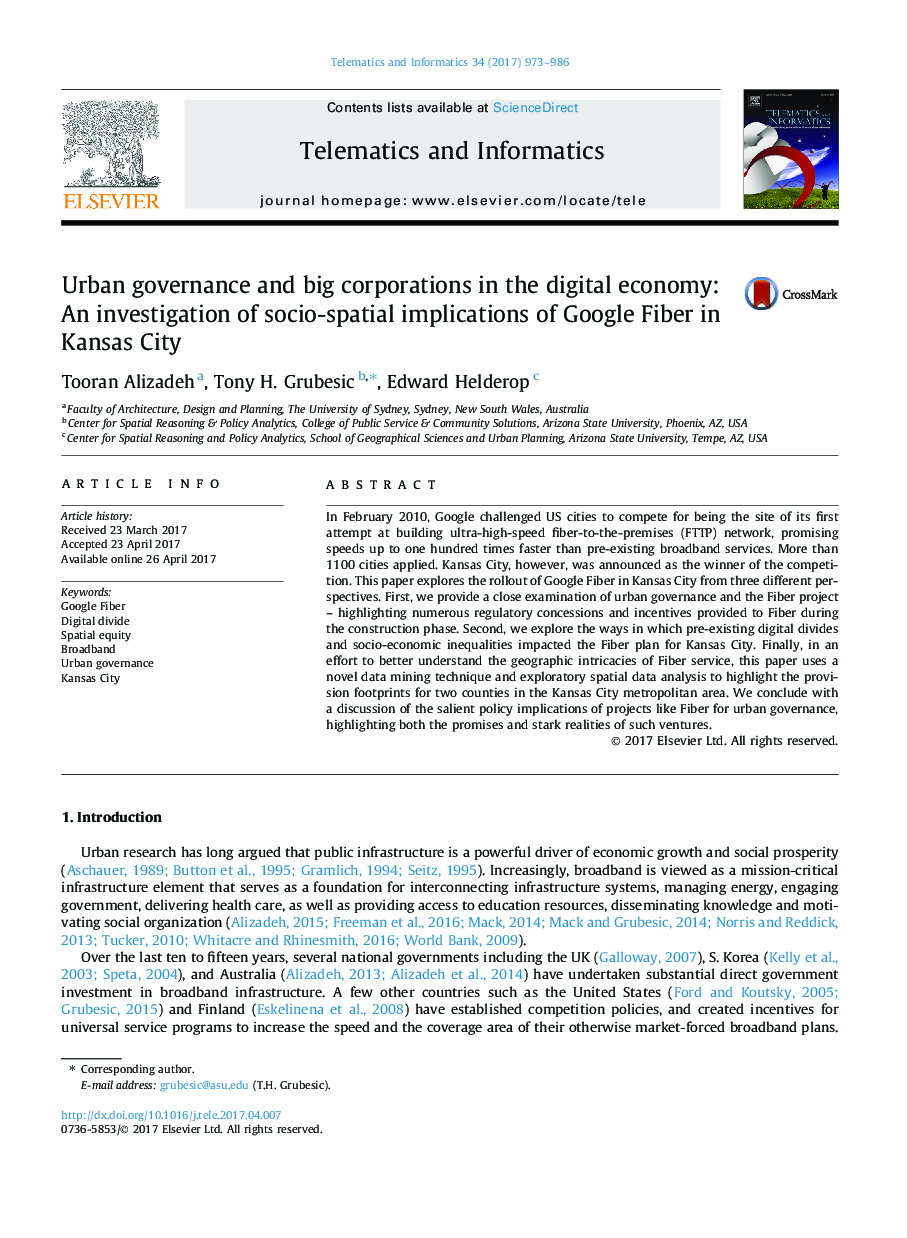| Article ID | Journal | Published Year | Pages | File Type |
|---|---|---|---|---|
| 6889946 | Telematics and Informatics | 2017 | 14 Pages |
Abstract
In February 2010, Google challenged US cities to compete for being the site of its first attempt at building ultra-high-speed fiber-to-the-premises (FTTP) network, promising speeds up to one hundred times faster than pre-existing broadband services. More than 1100 cities applied. Kansas City, however, was announced as the winner of the competition. This paper explores the rollout of Google Fiber in Kansas City from three different perspectives. First, we provide a close examination of urban governance and the Fiber project - highlighting numerous regulatory concessions and incentives provided to Fiber during the construction phase. Second, we explore the ways in which pre-existing digital divides and socio-economic inequalities impacted the Fiber plan for Kansas City. Finally, in an effort to better understand the geographic intricacies of Fiber service, this paper uses a novel data mining technique and exploratory spatial data analysis to highlight the provision footprints for two counties in the Kansas City metropolitan area. We conclude with a discussion of the salient policy implications of projects like Fiber for urban governance, highlighting both the promises and stark realities of such ventures.
Related Topics
Physical Sciences and Engineering
Computer Science
Computer Networks and Communications
Authors
Tooran Alizadeh, Tony H. Grubesic, Edward Helderop,
